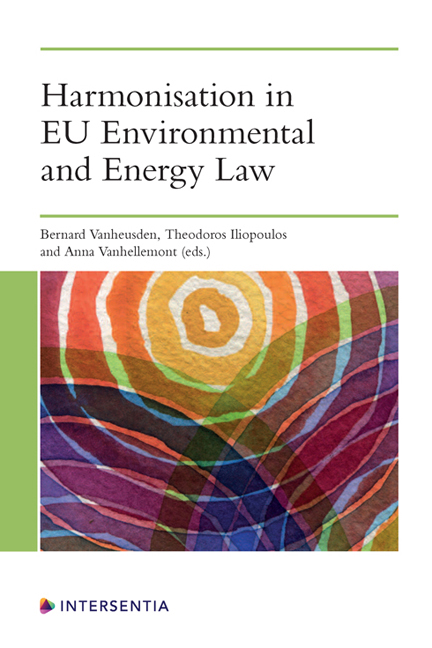Foreword
Published online by Cambridge University Press: 26 May 2022
Summary
INTRODUCTION
After nearly fifty years of EU environmental law-making, the discussion on codification and harmonization is not only more relevant than ever, but it is also unavoidable for at least three reasons:
1) The increase of legislation across very different thematic areas/sectors – water, nature, air, waste and chemicals; often leading to a certain dispersion of legal instruments.
2) The volume of legislation (in the order of 50 main legal instruments) which needs to be effectively enforced.
3) The use of very different kinds of instruments and approaches over time (directives, regulations, decisions).
The Commission is working hard in ensuring the overall coherence when developing and evaluating legislation.
Let me address these matters further.
DEVELOPING LEGISLATION
1) In the field of environmental policy, it is important to note the key role of Environmental Action Plans (EAPs) since 1973 in outlining the priorities of the EU legislative agenda for five-year periods.
We are now on our 7th EAP and have tabled our proposal for an 8th EAP under Art. 192 (3) of the Treaty. Environmental Action Plans are adopted through the co-decision procedure by the Council and the European Parliament.
2) The Treaty, of course, plays a very significant role, in particular its Environment Chapter (Articles 191 and 192 TFEU) frames the level of ambition and steers EU action forward by means of certain basic principles.
The Chapter, introduced in 1987, was in part a Treaty codification of what was endorsed in earlier action plans. The first action plan in 1973 already announced the polluter pays principle. The action plans themselves are mentioned in Article 192(3).
3) Significant initiatives developing new “concepts” have contributed to greater EU harmonization in this area. The Circular Economy or the recent European Green Deal, are very good examples in moving forward our environmental policy.
EVALUATING AND REVIEWING LEGISLATION
Codification has already taken place at the level of most EU environmental individual instruments. This means integrating amendments and streamlining legal texts.
- Type
- Chapter
- Information
- Harmonisation in EU Environmental and Energy Law , pp. v - viiiPublisher: IntersentiaPrint publication year: 2022



